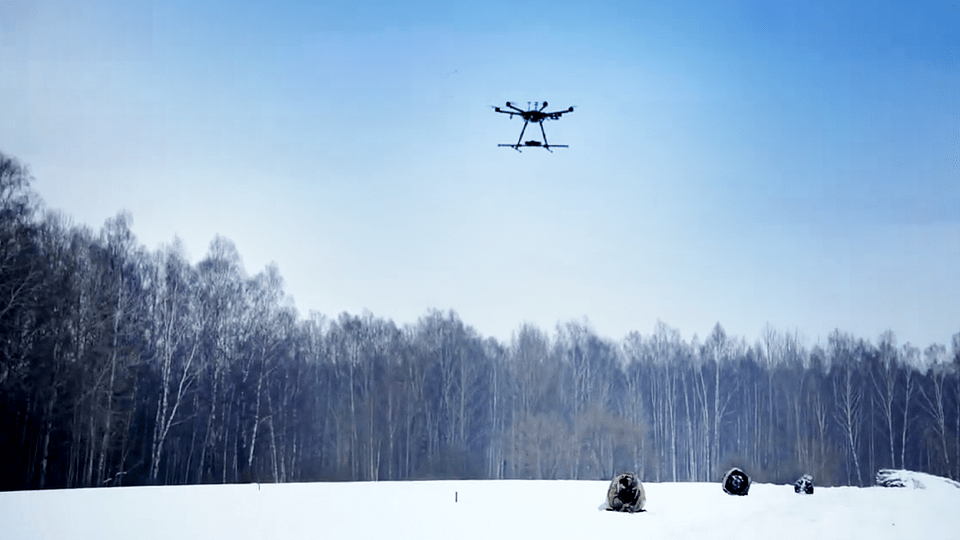Expedition Utilizes Advanced Drone Tools in Search for Missing Aircraft
A recent documentary by the Discovery Channel, titled Finding Amelia, highlights a significant expedition aimed at uncovering the fate of Amelia Earhart. The SPH Engineering team participated in this mission, bringing advanced drone-based technology to the dense jungles of Papua New Guinea in the ongoing quest to solve one of aviation’s greatest mysteries.
The Legacy of Amelia Earhart
Amelia Earhart disappeared over the Pacific Ocean in 1937 while attempting to become the first woman to fly around the world. Despite numerous efforts, neither she nor her aircraft has ever been found. Over the decades, many theories and expeditions have sought to uncover the truth behind her disappearance. The recent Finding Amelia documentary marks the latest effort in this enduring search.
Nearly two years before the expedition, SPH Engineering was invited to join the mission, following their successful operations in Greenland. Their task was to assist in the search for Earhart’s aircraft using drone-mounted magnetometers in the challenging environment of Papua New Guinea’s New Britain island.
Preparing for the Mission
The planning phase for this mission began in February 2021. The team conducted experimental tests to detect aircraft engines using drone-mounted magnetometers. These tests laid the foundation for the technology later employed in the field. The team analyzed satellite imagery and elevation maps to study the terrain, crucial for mission preparation. Their analysis suggested that the average vegetation height would permit the detection of aircraft engines using the magnetometer.
Upon arrival in Papua New Guinea in 2021, the SPH Engineering team deployed a suite of drones equipped with magnetometers, LiDAR, and photogrammetry tools. The initial step involved using a small drone to create precise maps of the search area, essential for planning subsequent flights. These maps were followed by LiDAR scanning from a safe altitude, which was used to build Digital Surface Models (DSM) and Digital Terrain Models (DTM) for magnetic survey planning.
Challenges and Findings
The team then conducted magnetic surveys with the drone-based magnetometer. Despite initial expectations, the presence of extremely tall trees posed challenges for magnetic flight planning. “In contrast to what we saw in satellite data available before the expedition, the average height of the trees was a bit higher, but the main problem was real ‘skyscrapers’ towering up to 60 meters,” said Janis Kuze, Director of Special Projects at SPH Engineering. These tall trees, missed in satellite elevation data, complicated the detection process, although magnetic anomalies were successfully detected over a B-17 bomber crash site.
Despite focusing on magnetometers to detect aircraft engines, the team found that the high trees and limited magnetic ferrous metal in airplane engines made reliable detection difficult. This realization led to a shift in focus back to LiDAR technology.
Successful Use of LiDAR Technology
The team conducted numerous low-altitude LiDAR flights, using previous scans for flight planning, to build detailed maps of the ground surface beneath the trees. The LiDAR data revealed potential Japanese troop trails and an object resembling the shape and size of Amelia Earhart’s aircraft, the Lockheed Electra.
The outcomes of this expedition were positive from a technological standpoint. The SPH Engineering team achieved significant advancements in both their technology and methodology, enhancing their capabilities for future missions. “We view the expedition as a success on multiple levels. It gave us invaluable experience in extreme conditions and allowed us to test and enhance our technologies,” said Alexey Dobrovolskiy, CEO of SPH Engineering. He expressed gratitude for the opportunity to contribute to the historic mission and looked forward to participating in similar future expeditions.
The expedition not only furthered the search for Amelia Earhart but also provided SPH Engineering with unique and invaluable experiences, equipping the team with the necessary skills and insights for future operations in similarly complex environments.

